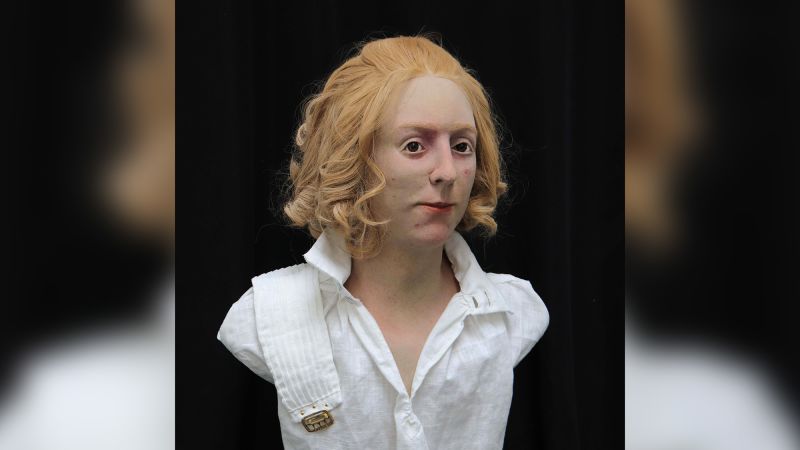Researchers at the University of Dundee have recreated the face of Bonnie Prince Charlie as he appeared when leading the unsuccessful 18th century Jacobite rebellion as he sought to reclaim the British throne for his father.
In the image, Bonnie Prince Charlie appears with blonde curly hair, wide eyes and acne on his skin, revealing a different side to the more conventionally heroic figure he has traditionally been depicted as.
“I didn’t want him to appear as royalty even though he very much was. I did want to show a different angle with that.”
The image was created using death masks of the prince, which were photographed and mapped. It was common for notable figures at the time to have a cast taken of their face after they died, according to the university in a press release.
Using state-of-the-art software, 3D models were then produced, allowing researchers to “de-age” the prince, the university added.
The grandson of exiled Catholic King James II, Charles Edward Stuart, as he was officially named, led an unsuccessful Jacobite rebellion in 1745 when he was 24 and seeking to reclaim the British throne for his father.
After his initial attempted invasion supported by a French fleet was thwarted by storms in 1744, the prince set out a year later with a small force of about a dozen men. With his charm and charisma, he sparked an uprising in Scotland, marched as far south as Derby and earned his nickname “Bonnie Prince Charlie.”
But the rebellion ultimately failed and it took him months to escape back to the European continent, leaving behind only the now-romanticized memory of his uprising.
He spent the rest of his life on the continent, dying in 1788 at the age of 67 in Rome, Italy.
“I’ve been interested in the Jacobites for a while now and it just kind of evolved,” Veselá said. “I saw a reconstruction of him in 2019 by Hew Morrison and he also used the death mask and created a version of him just before he died so I wanted to create a slightly different version.”
For her depiction of a 24-year-old prince, Veselá had to de-age him by applying the knowledge she learned from studies about the aging patterns in humans to make him look younger and examining the contemporary accounts and paintings that portrayed the prince.
“The face transforms following death,” Houlton adds. “It’s a case of not only reversing his age but reversing the effects of being deceased.”
The recreation will be included in the University of Dundee’s annual Masters Show, with the exhibition running from Saturday to August 27.

